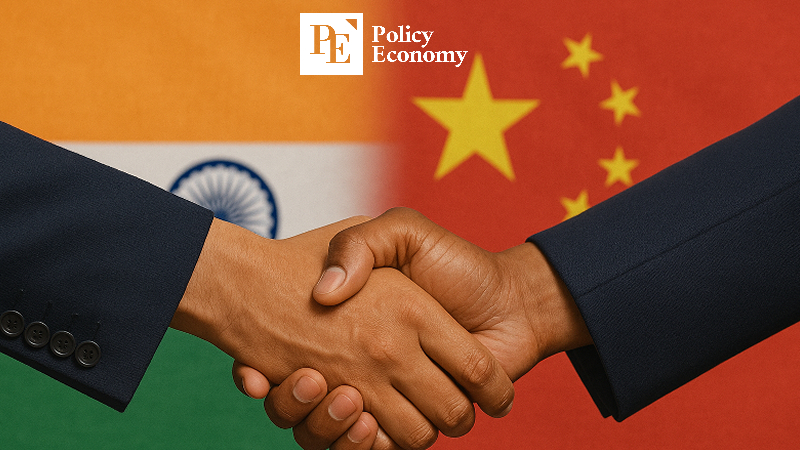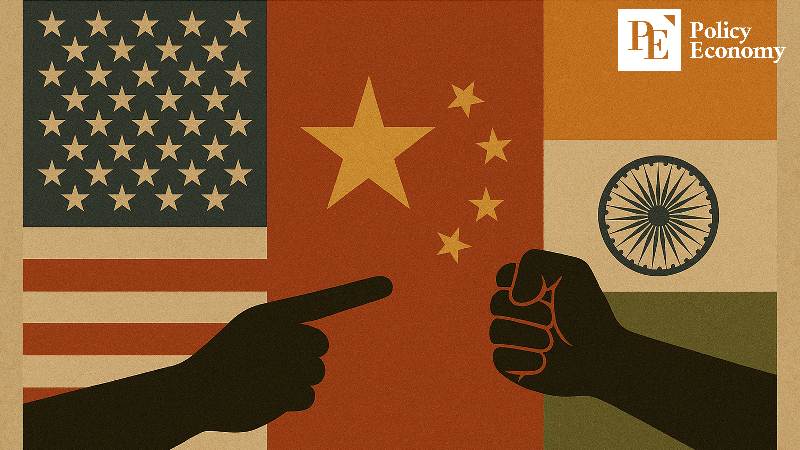With U.S. Tensions Rising, China Moves In—and India Has Few Options
Input
Modified
China and India Resume Trade at Three Border Points "U.S. Tariff War Opened the Door" — Beijing Exploits U.S.–India Tensions With Limited Military and Economic Leverage, India Has Little Choice but to Engage

China and India have agreed to resume border trade for the first time in five years, following the deadly clashes of 2020. With U.S. President Donald Trump’s trade pressure showing little sign of easing, the two countries are joining forces to establish a strategic buffer zone.
China–India Relations Show Signs of Recovery
On August 19 (local time), AP and The Economic Times reported that China and India had agreed to resume trade at three border points, marking the first such reopening since deadly clashes in 2020. That year, troops from both countries fought in the Galwan Valley in Ladakh, a disputed Himalayan border region, leaving more than 20 soldiers dead and plunging bilateral ties into years of tension. Momentum for rapprochement began to build after a China–India summit on the sidelines of the BRICS leaders’ meeting in Kazan, Russia, in October last year.
The latest agreement came during Chinese Foreign Minister Wang Yi’s visit to India from August 18–19. Wang met with Prime Minister Narendra Modi, External Affairs Minister Subrahmanyam Jaishankar, and National Security Adviser Ajit Doval. In addition to restoring border trade, the two sides agreed to reopen direct flights, expand visa issuance for tourists, businesspeople, and journalists, and enlarge pilgrimage quotas to the Kailash–Manasarovar region starting in 2026. They also pledged to coordinate commemorations for the 75th anniversary of diplomatic relations this year, cooperate during the BRICS summits hosted by India in 2026 and China in 2027, and share hydrological data in emergency situations.

‘Tariff War’ Flips the Equation
India, long seen as a “pro-U.S.” partner, has abruptly drawn closer to China—largely a consequence of President Donald Trump’s hardline trade policy. Recently, Washington and New Delhi have clashed fiercely over tariffs. On August 6, the White House announced that Trump had signed an executive order imposing an additional 25% tariff on Indian goods, citing India’s continued imports of Russian oil. In the order, Trump stated, “I have learned that the Indian government is directly and indirectly importing Russian oil. Under relevant law, additional tariffs will apply to Indian goods entering U.S. territory.” New Delhi, however, pushed back, declaring that its policy on Russian oil purchases would remain unchanged.
With differences unresolved, bilateral trade talks have stalled. To make matters worse, a planned visit to New Delhi by the U.S. negotiating team from August 25–29 has been canceled, leaving the timing of the sixth round of trade negotiations uncertain. Markets now widely expect the additional 25% tariff on Indian imports to take effect on August 27 as scheduled.
China has been quick to exploit this rift. Both Beijing and New Delhi face mounting pressure to maintain strategic flexibility in dealing with Washington, making cooperation between the two increasingly appealing. As one diplomatic analyst noted, “China has long viewed India as the weakest link in America’s Indo-Pacific strategy. For Beijing, the deterioration of U.S.–India relations is a golden opportunity to keep New Delhi from tilting fully toward Washington.”
Does India Really Have a Choice?
Some analysts argue that once China extended its hand, a thaw in relations with India became almost inevitable. Given its military limitations, India would struggle to sustain a prolonged confrontation with Beijing. According to data from the Stockholm International Peace Research Institute (SIPRI), India’s defense spending reached $86.1 billion in 2023—the world’s fifth largest. Yet this pales in comparison with the U.S. at $997 billion and China at an estimated $314 billion. Structural problems such as equipment shortages and procurement-related corruption further weaken India’s armed forces, leaving them far behind China’s capabilities.
Economically, India faces similar constraints. In 2019, the year before the border clashes, New Delhi recorded a $49 billion trade deficit with Beijing. Chinese imports made up 13.7% of India’s total imports, while exports to China accounted for just 5.1%. This imbalance underscores China’s dominance in India’s domestic market, where Chinese firms control roughly 50% of the electronics sector and over 70% of the raw materials for antibiotics. Analysts warn that any attempt by India to impose an economic boycott on China would backfire, inflicting greater harm on India itself than on Beijing.





















